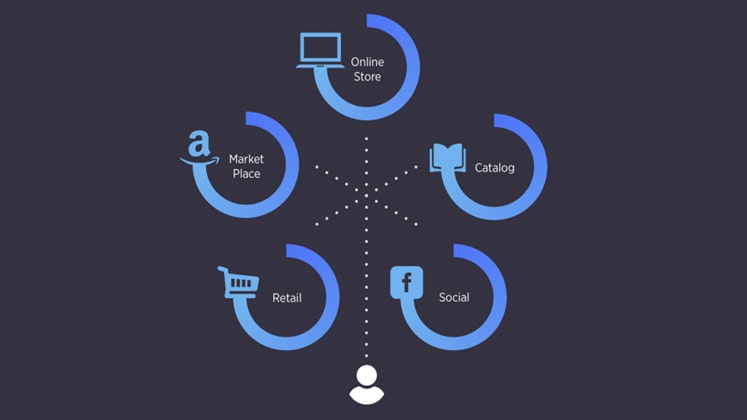According to a new study by Arthur D. Little’s (ADL), an international management consulting firm headquartered in United States, that links strategy, innovation and technology – “Tomorrow’s customers want to complete purchases when and where they want and rapidly evolving mobile and online sales platforms enable this. In response, retailers are adapting their business models and we are seeing the appearance of U-channel retailing”. Explaining the concept as a new form of retailing that is Ubiquitous, Universal and Unique, focused on “U” – the customer, U-channel is today all about offering the customer more channels to interact whilst seamlessly integrating them to ensure “one face to the customer” where channels will become mere “touch points” as consumers navigate smoothly through the buying process; selecting products online at home, picking-up their products at a convenient location and paying from their mobile phone.
While the growing concept of multi-channel retailing was one of the top trends last year too, the concept finds a place even this year and gets a new name, becoming stable with almost every retailer. 2012 is the year that coins the term ‘U-CHANNEL RETAILING’ giving a new dimension to the concept of multi-channel retailing. The importance of using IT to grow and penetrate deeper into old and new markets is now well established, what is new is the strategy behind the use of various IT-enabled tools, the multiple applications for buying flexibility and the growing use of these tools to control and monitor sales, products and inventory for lean operations with wider reach. As both retailers and shoppers get net savvy the trend will get bigger...
Adopted by Burberry in the best possible way for which the company has also topped the UK high street for the best Omni-channel experience in 2012. The luxury fashion brand continues to lead the way with its digital enhancements, its new flagship store was a clue as to where leading retailers might envisage their future; the amount of product available on the shop floor has been scaled back, new selling methods such as in-store ordering and iPad terminals have been created.
Even Gap Inc., acted aggressively towards growing a web channel since 2006 when online retail had only started to grow. Recording an online revenue exceeding $ 1.5 billion in 2011, the brand has been implementing an online strategy that takes its assortment of brands to 90 countries, enabling customers to shop for their preferred brand amongst its most popular five – Gap, Banana Republic, Old Navy, Piperlime and Athleta. By deploying a number of new tools to allow customers to shop more easily from any location, including their smart phones, the company has also established a new distribution centre in the western United States to better serve the North American customers.
Another top retailer who took advantage of the concept in a big way in 2012 was Woolworths, SA, who recently invested in a big way in its online experience. Creating an omni-channel module in order to become more customer centric, integrating systems to enable a seamless experience across stores and online, they upgraded their online experience, expanded their product offer and information online. The retailer launched an f-commerce store in January 2012 as a part of their 3-year plan to make shopping more convenient, following the launch of its new and improved website in July 2011.
Also as online sales skyrocket in developing markets, an online presence is at the moment becoming a low-risk way to test new markets and complements existing store footprints. Entering China to test the popularity of its product, GAP Inc also launched an e-commerce site for the Chinese subcontinent last year, following which online orders by the end of 2012 have been logged from over 330 cities in China alone. In fact, becoming one of China’s fastest growing sectors in spite of the country’s slowing economy, the Chinese e-commerce market is at an all time high, making it easier for foreign brands to enter and make a deeper presence in an otherwise competitive country. Macy’s and Walmart also have both announced their planned entry into the country through e-commerce to test the response of their brand to a new affluent Chinese customer.
Adopted by retailers like GAP, Walmart, Levis, Nike, Target, Burberry to guarantee demand for their products, the concept of ‘crowd sourcing’ was all about brands no longer dictating the fashion scenario and instead orders being made as per the choice of the customers.
But not only to test new markets, but also to test new products with an existing client, online is also imparting an essential platform for the rising concept of thoughtful buying through ‘Crowd Sourcing’, seen for the first time in 2012. Cutthroat competition has led to the need of a revised system of inventory control as in such unpredictable times low inventory of a hot selling product is a loss in opportunity while bulk of an unwanted design, leads to significant markdowns and inventory costs.
By giving options of their upcoming ranges to the consumers via virtual systems at their stores and social media platforms, the final selected pieces by the consumers were manufactured and sold, eliminating the risk of the product being left behind on the shelves. The trend guaranteed 100% sales and adequate order placements for names like Designer Derek Lam, which used eBay’s 90 million strong global communities as a way to trial the brand’s diffusion line in 2012, looking for majority votes for each piece. JCPenney too provided its customers with the same allowing minor customizations in already existing designs as per the choices of the customer with the use of various virtual tools. A success for the retailers, the concept is also a hit for manufacturers getting bulk orders, as the buyers are sure that the product will sell.







